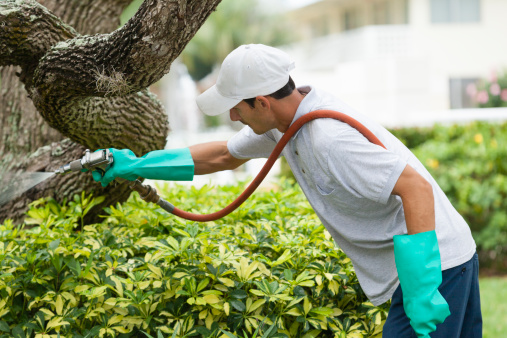Is Home Pesticide Use a Cancer Risk?
Children who were exposed to indoor-based pesticides appear to have a higher risk of developing leukemia and lymphoma, according to a small meta-analysis on 16 observational studies examining pesticide exposure and childhood cancer.
There were 13 studies on indoor residential insecticide exposure and that exposure was associated with a significant increase in risk for childhood leukemia (OR 1.47, 95% CI 1.26-1.72, I² 30%) and lymphomas (OR 1.43, 95% CI 1.15-1.78, I² 0%), Mei Chen, PhD, MS, of Harvard T.H. Chan School of Public Health, and colleagues reported in Pediatrics.
In fact, when studies on leukemia and lymphoma were combined, the authors found a statistically significant association between home pesticide exposure during childhood and “childhood hematopoietic malignancies” (OR 1.46, 95% CI 1.32-1.60, I² ≤5%). Eleven out of 12 of these studies examined indoor insecticides.
Daniel S. Wechsler, MD, PhD, associate professor, pediatrics and pharmacology & cancer biology at Duke University Medical Center, told MedPage Today in an e-mail that the meta-analysis appeared to have been “carefully done.” Wechsler was not involved with the study.
“The current study adds to the ‘smoking gun’ raised by other investigators that pesticides could contribute to the development of cancer in children,” he said. “It certainly seems prudent to limit exposure of children (or anyone) to these agents, especially in indoor locations.”
Not surprisingly, combining studies that examined indoor insecticide exposure and professional home treatment exposure yielded a twofold, statistically significant increased risk for hematopoietic malignancies (OR 2.04, 95% CI 1.40-2.97) and childhood leukemia (OR 1.92, 95% CI 1.27-2.89).
 Exposure to all home pesticides yielded similar results. Both indoor insecticides (OR 1.59, 95% CI 1.39-1.81) and home pesticides (OR 1.55, 95% CI 1.38-1.75, I² 0% for both) were associated with increased risk of acute leukemia (AL). While there was a positive association with home pesticide exposure and childhood brain tumors, the findings were not statistically significant.
Exposure to all home pesticides yielded similar results. Both indoor insecticides (OR 1.59, 95% CI 1.39-1.81) and home pesticides (OR 1.55, 95% CI 1.38-1.75, I² 0% for both) were associated with increased risk of acute leukemia (AL). While there was a positive association with home pesticide exposure and childhood brain tumors, the findings were not statistically significant.
Overall, home pesticide use was associated with a statistically significant risk in all examined childhood cancers, including neuroblastoma and Wilms tumor (OR 1.40, 95% CI 1.28-1.52, I² 5%).
Co-author Chesheng Lu, PhD, MS, also of Harvard T.H. Chan School of Public Health, said that he was surprised by the “consistency” of the results when examining pesticide exposures to increased risk of leukemia and lymphoma. He emphasized the role that both clinicians and the community could play in helping to protect children from exposure.
“Pediatricians should remind parents with young kids to try not to use pesticides in your household and if kids go to a daycare or school that uses lots of pesticides, parents may need to talk to the school or school district to see if there’s a better alternative without using chemical-based treatment,” Lu told MedPage Today. “The most important message is these exposures can be minimized, because we don’t have to use pesticides in places where kids spend so much time.”
Researchers also examined studies involving outdoor pesticides, such as outdoor insecticides, herbicides and fungicides, but the results were much less consistent. There was a statistically significant association between exposure to herbicides and all types of childhood cancer combined (OR 1.35, 95% CI 1.16-1.55, I² 23%), as well as childhood leukemia specifically (OR 1.26, 95% CI 1.10-1.44, I² 0%). However, there was no statistically significant association between outdoor pesticides or outdoor insecticides and childhood cancer.
This retrospective meta-analysis included a search of all observational studies on residential pesticide exposures and childhood cancer published prior to February 2014. Of the 277 studies found, 16 case-control studies were selected that met full inclusion criteria. The studies were published from 1993 to 2012, with sample sizes ranging from 45 to 1,184 cases. Participation rates for both cases and controls ranged between around 60% to around 95%.
The authors note that the small number of studies selected is a major limitation of this analysis. They also acknowledge the potential for selection bias, recall bias, misclassification, and publication bias. Wechsler also cited the 35 year time frame (1976-2011) and the geographically diverse location of the studies (North America, Australia, France, China) as potential limitations.
Lu said that because this kind of research is not commonly conducted by that many investigators, he hoped that this analysis will encourage future research into pesticide exposure and cancer. Additional studies could help to determine the nature of the link between these chemicals and the risk of cancer in children.
“Hopefully as we get more studies in the future, we will have a better or more significant conclusion as to whether this is truly the case - that pesticide exposure could lead to childhood cancer,” Lu concluded.
This study was supported by the Department of Energy and Environmental Protection, State of Connecticut.
The authors have indicated they have no potential conflicts of interest to disclose.
###
Source Reference: Chen M, et al “Residential exposure to pesticide during childhood and childhood cancers: A meta-analysis” Pediatrics 2015; DOI: 10.1542/peds.2015-0006